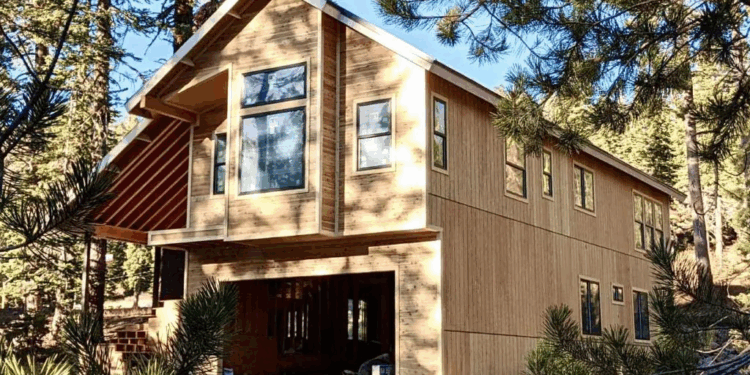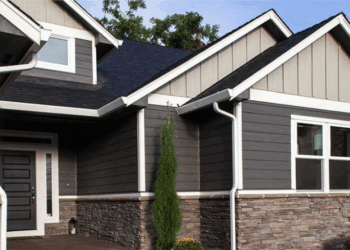
Embarking on the journey of understanding home siding installation cost, we delve into the intricacies that define this pivotal aspect of home improvement. From material choices to labor considerations, this guide is designed to enlighten and inform homeowners seeking clarity on the costs involved in enhancing their abode's exterior.
As we progress, we will uncover the essential factors that influence the overall expenses of home siding installation, providing a roadmap for making informed decisions and ensuring a seamless renovation process.
Factors Affecting Home Siding Installation Cost
When it comes to determining the cost of home siding installation, several factors come into play. Understanding these factors can help homeowners budget effectively and make informed decisions.
Material Choice Impact
The material you choose for your home siding can have a significant impact on the overall cost of installation. Different materials come at varying price points, with some being more expensive than others. For example, vinyl siding tends to be more affordable compared to fiber cement or wood siding options.
It's essential to consider not just the upfront cost of the material, but also its durability and maintenance requirements, as these can affect long-term expenses.
Home Size Influence
The size of your home is another crucial factor that affects siding installation costs. Larger homes require more materials and labor to complete the installation, resulting in higher overall expenses. Additionally, the shape and layout of the house can also impact the complexity of the installation process, further influencing the cost.
It's important to accurately measure the square footage of your home to get an idea of the materials needed and labor involved.
Complexity of Installation
The complexity of the installation process can also affect pricing. Factors such as architectural details, trim work, and any unique features of the home can increase the labor and time required for installation, leading to higher costs. Additionally, if there are any repairs or modifications needed before the new siding can be installed, this can also add to the overall expenses.
It's essential to discuss any specific requirements or challenges with your contractor to get an accurate estimate of the installation cost.
Different Types of Siding Materials and Their Costs
When it comes to choosing siding materials for your home, it's important to consider not only the initial cost but also the long-term maintenance expenses. Different types of siding materials come with varying price tags and maintenance requirements. Let's explore the costs associated with vinyl, wood, fiber cement, and metal siding options.
Vinyl Siding
Vinyl siding is one of the most budget-friendly options available. It is easy to install, requires minimal maintenance, and comes in a wide range of colors and styles. The average cost of vinyl siding installation ranges from $3 to $7 per square foot.
Wood Siding
Wood siding provides a natural and timeless look to your home but comes with a higher price tag compared to vinyl. The cost of wood siding installation can range from $6 to $12 per square foot. However, it requires more maintenance, such as painting or staining, to prevent rot and insect damage.
Fiber Cement Siding
Fiber cement siding is a durable and low-maintenance option that mimics the look of wood but without the high maintenance costs. The average cost of fiber cement siding installation is between $5 to $12 per square foot. While the initial cost is higher than vinyl, the long-term maintenance is lower.
Metal Siding
Metal siding, such as aluminum or steel, is a modern and sleek option that offers excellent durability and weather resistance. The cost of metal siding installation can range from $7 to $15 per square foot. While it may have a higher upfront cost, metal siding requires minimal maintenance and can last for decades.Consider the long-term maintenance costs associated with each siding material before making your decision
While budget-friendly options like vinyl may have lower initial costs, the long-term maintenance expenses should also be factored in. On the other hand, high-end materials like wood or metal may require more investment upfront but could save you money in the long run with lower maintenance costs.
Labor Costs and Installation Considerations
When it comes to home siding installation, labor costs play a significant role in determining the overall expenses. Hiring professional installers is crucial to ensure a quality installation that will stand the test of time. Let's delve into the details of labor costs and installation considerations.
Average Labor Costs
On average, labor costs for home siding installation range from $40 to $50 per hour per worker. The total labor costs will depend on the size of the project and the complexity of the installation. For a standard 1,500 square foot home, labor costs can range from $2,500 to $8,500.
Factors Impacting Labor Costs
- The size and layout of the home: Larger homes or homes with complex architectural features may require more labor and thus incur higher costs.
- The type of siding material: Some materials are more difficult to install than others, leading to increased labor costs.
- Accessibility: Homes with difficult access points or uneven terrain can increase labor costs as installers may need additional equipment or time to complete the job.
- Demolition and disposal: If old siding needs to be removed and disposed of, this will add to the labor costs.
Importance of Hiring Professional Installers
Hiring professional installers is essential for a successful siding installation. While DIY options may seem cost-effective initially, improper installation can lead to costly repairs and replacements down the line. Professional installers have the expertise and experience to ensure that the siding is installed correctly, maximizing its lifespan and durability.
Additionally, professional installers may have access to discounts on materials, ultimately saving you money in the long run.
Additional Costs to Consider
When planning for home siding installation costs, it's important to factor in various additional expenses that can impact the total budget. These costs go beyond the basic materials and labor, and can significantly affect the overall price of the project.
Insulation and Weatherproofing Expenses
Insulation and weatherproofing are crucial components of a home siding project, as they help improve energy efficiency and protect your home from the elements. Investing in high-quality insulation and weatherproofing materials may incur additional costs, but they can lead to long-term savings on energy bills and prevent potential damage to your property.
Permit Costs and Regulatory Fees
Before starting any siding installation project, homeowners may need to obtain permits from their local municipality. Permit costs can vary depending on the location and the scope of the project. Additionally, there may be regulatory fees or inspections required throughout the installation process, which should be budgeted for in advance to avoid any delays or extra charges.
Unexpected Expenses
Despite careful planning, unexpected expenses can still arise during a home siding installation. These may include issues discovered during the removal of old siding, structural repairs, or changes in the project scope. It's important to set aside a contingency fund to cover any unforeseen costs that may come up during the installation process, ensuring that the project stays on track and within budget.
Closing Notes
In conclusion, the realm of home siding installation cost is multifaceted, encompassing various elements that contribute to the final expenditure. By grasping these nuances and preparing adequately, homeowners can embark on their renovation journey with confidence and foresight, ultimately transforming their living spaces with efficiency and elegance.
FAQ Section
What factors can impact the overall cost of home siding installation?
Material choice, home size, and installation complexity are key factors that influence the total cost of home siding installation.
Which siding material typically requires the lowest long-term maintenance costs?
Vinyl siding is known for its affordability and minimal maintenance requirements, making it a budget-friendly option for homeowners.
How do labor costs vary during the home siding installation process?
Labor costs can fluctuate based on factors such as location, project timeline, and the skill level of the installers hired.
What are some unexpected expenses homeowners should budget for when planning home siding installation?
Unforeseen costs may include structural repairs, additional insulation needs, or customized finishes that can impact the overall budget.











